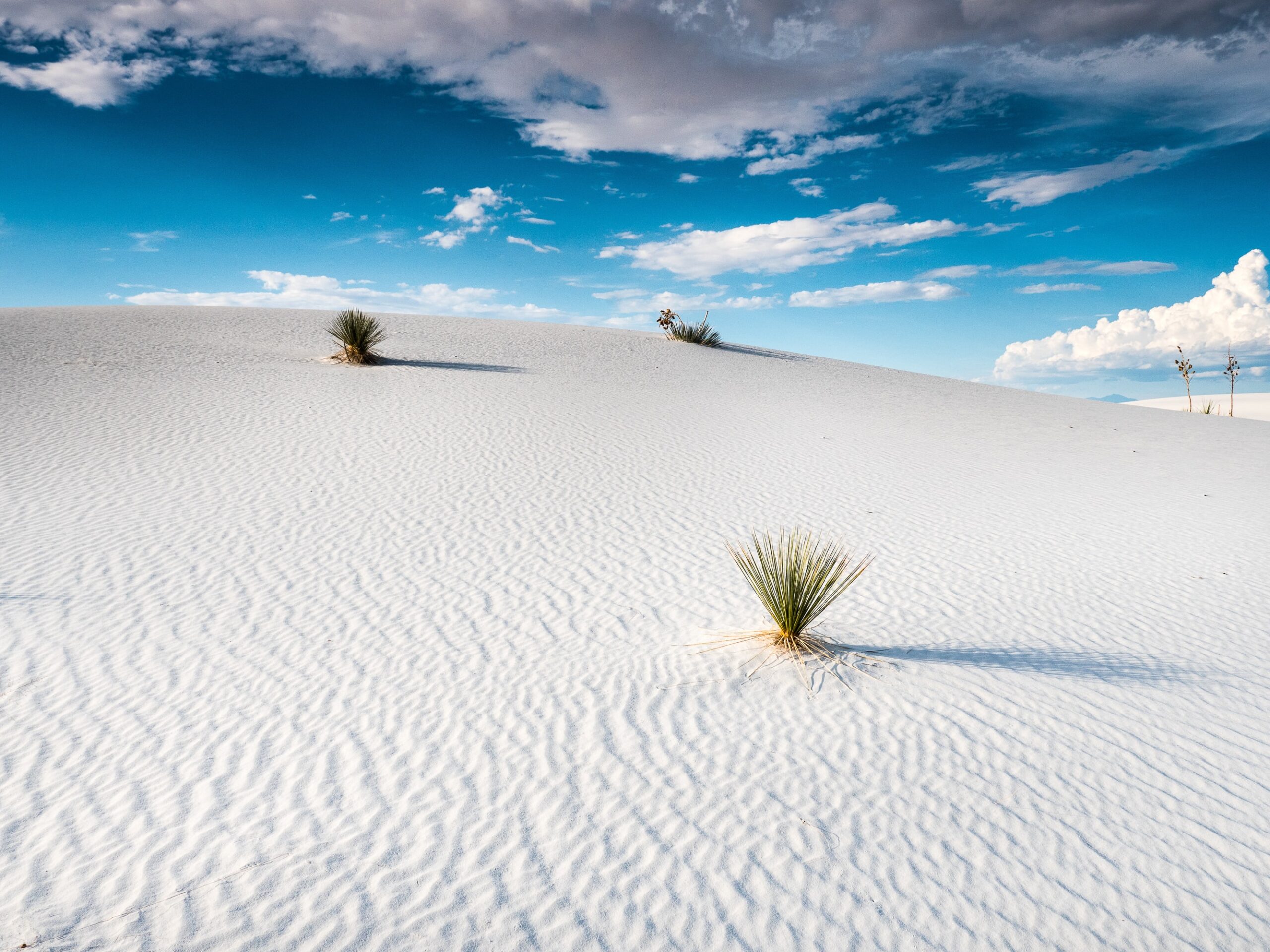Miss International Travel? Go to These National Parks Instead
Your U.S. passport is probably tucked away in the back of a drawer right now, waiting for the day when we can all travel the world freely. Stop mourning the pause in international travel: Now’s the perfect time to get a Parks Passport and collect stamps from every National Park instead. The United States boasts landscapes so vast and varied, you can enjoy memorable and rich experiences without crossing a border. What’s more, many National Parks look and feel like completely different countries. We’ve picked five of the best to add to your domestic travel list, where you can channel the best of Iceland, Costa Rica, and beyond.
1. Swap an African Safari for “Big 5” Spotting in Denali
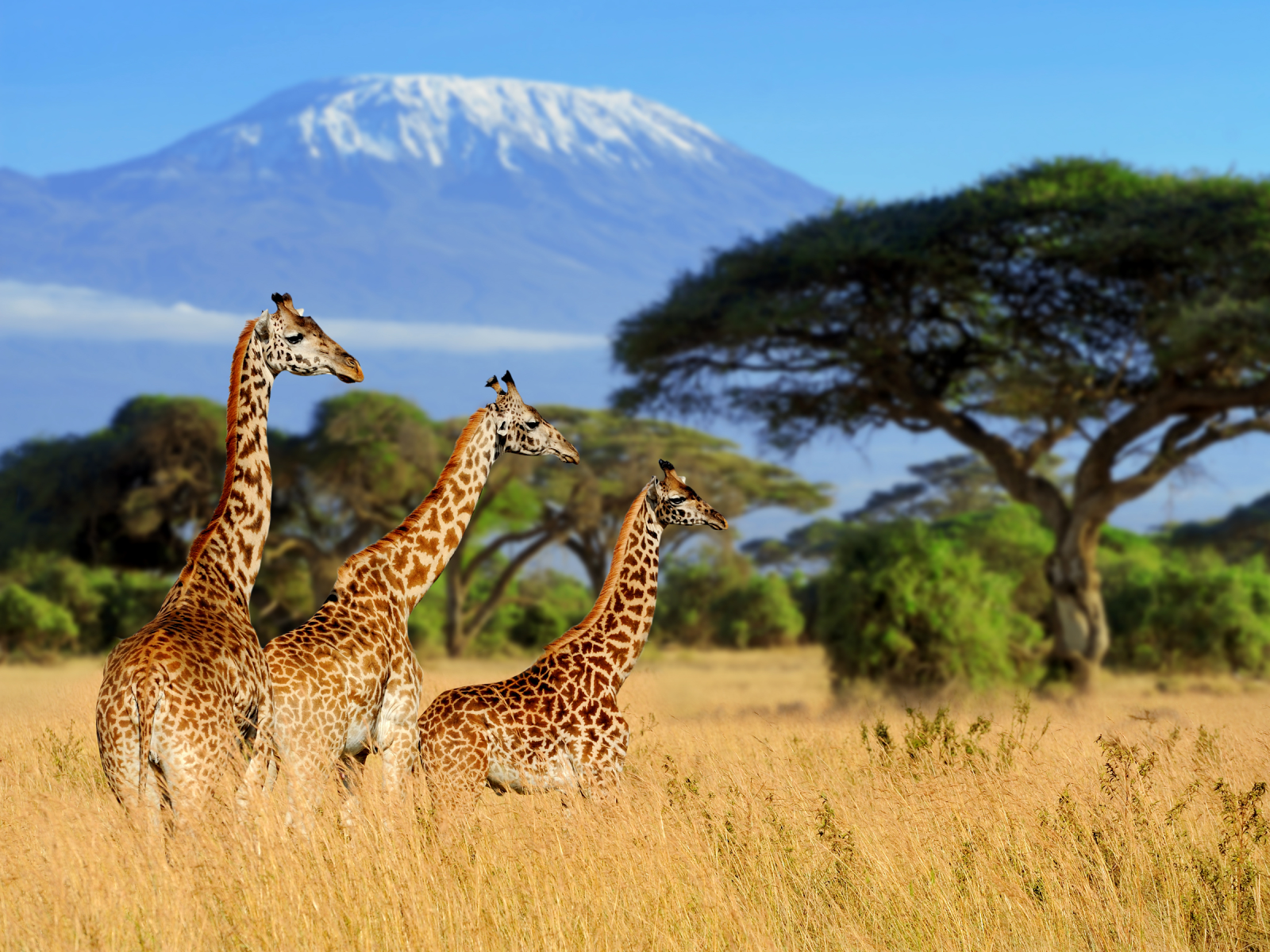
Giraffe spotting on African safari
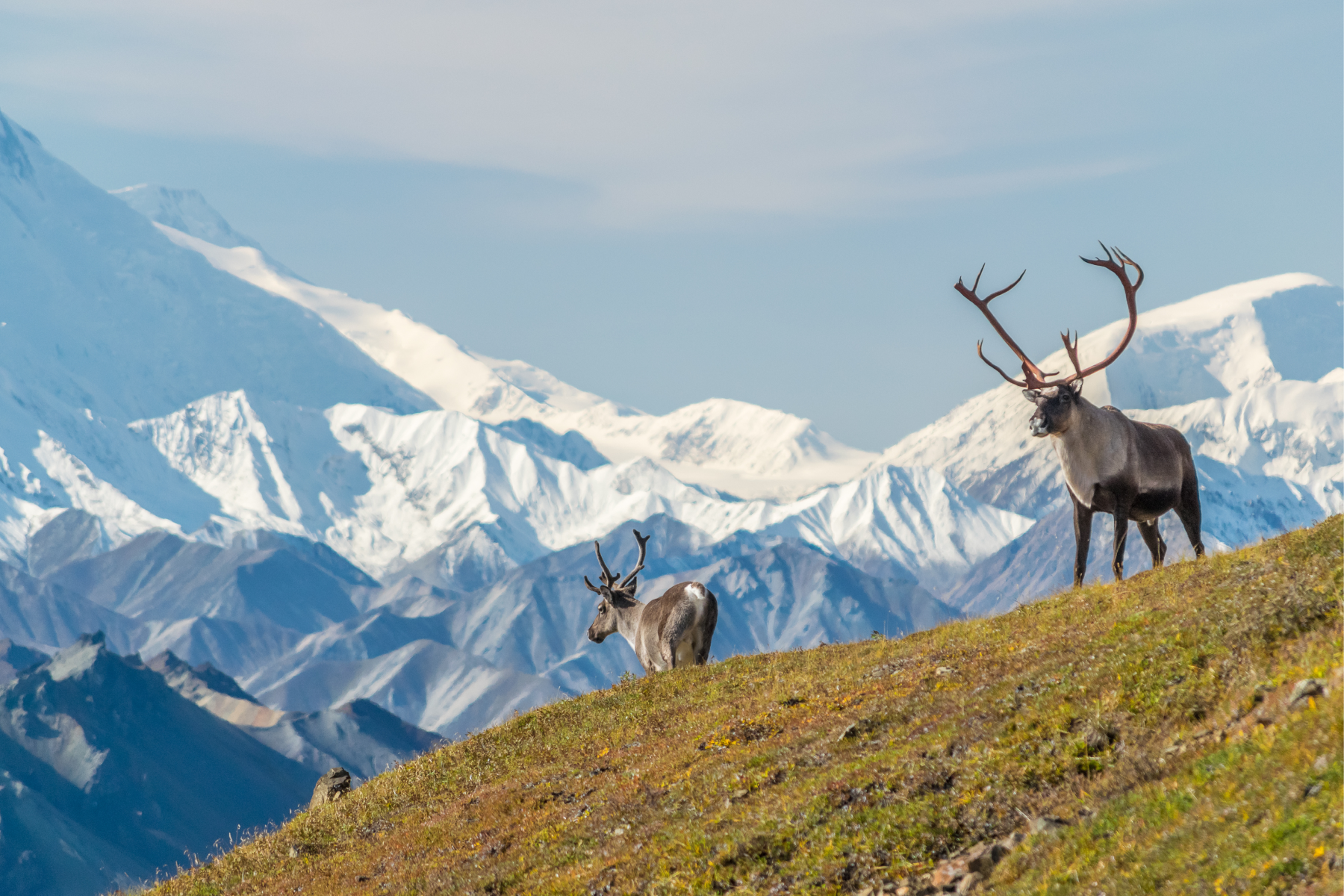
Elk spotting in Denali National Park
Want a once-in-a-lifetime wildlife safari, the kind you thought you could only get in Africa? Sure, it may mean shifting your safari expectations of which Big Five you’re going to see (and how to pack for your journey), but spotting grey wolves, grizzly bears, moose, caribou, and Dall sheep during the course of a park visit to Alaska’s Denali National Park is one you’ll never forget.
Indeed, Denali provides wildlife lovers some of the best chances in the world to see wolves and grizzlies. Go in high summer to see adolescent moose and caribou strolling on runway-model-long legs beside the park’s braided rivers. Dall sheep, white wool with magnificent curved horns, can sometimes be spotted picking their way across mountain ridges. What’s more, the single road into the six-million-acre park skirts its namesake mountain, a thrilling sight itself. Should Denali emerge from its regular hiding place beneath a blanket of clouds, you’ll be treated to the sight only 30% of park visitors can claim. Crowned with two peaks—a dome and a pyramid—seeing North America’s highest mountain peak is an extra reward for the lucky. Get lucky.
2. Experience New Zealand’s Wonders in Yellowstone
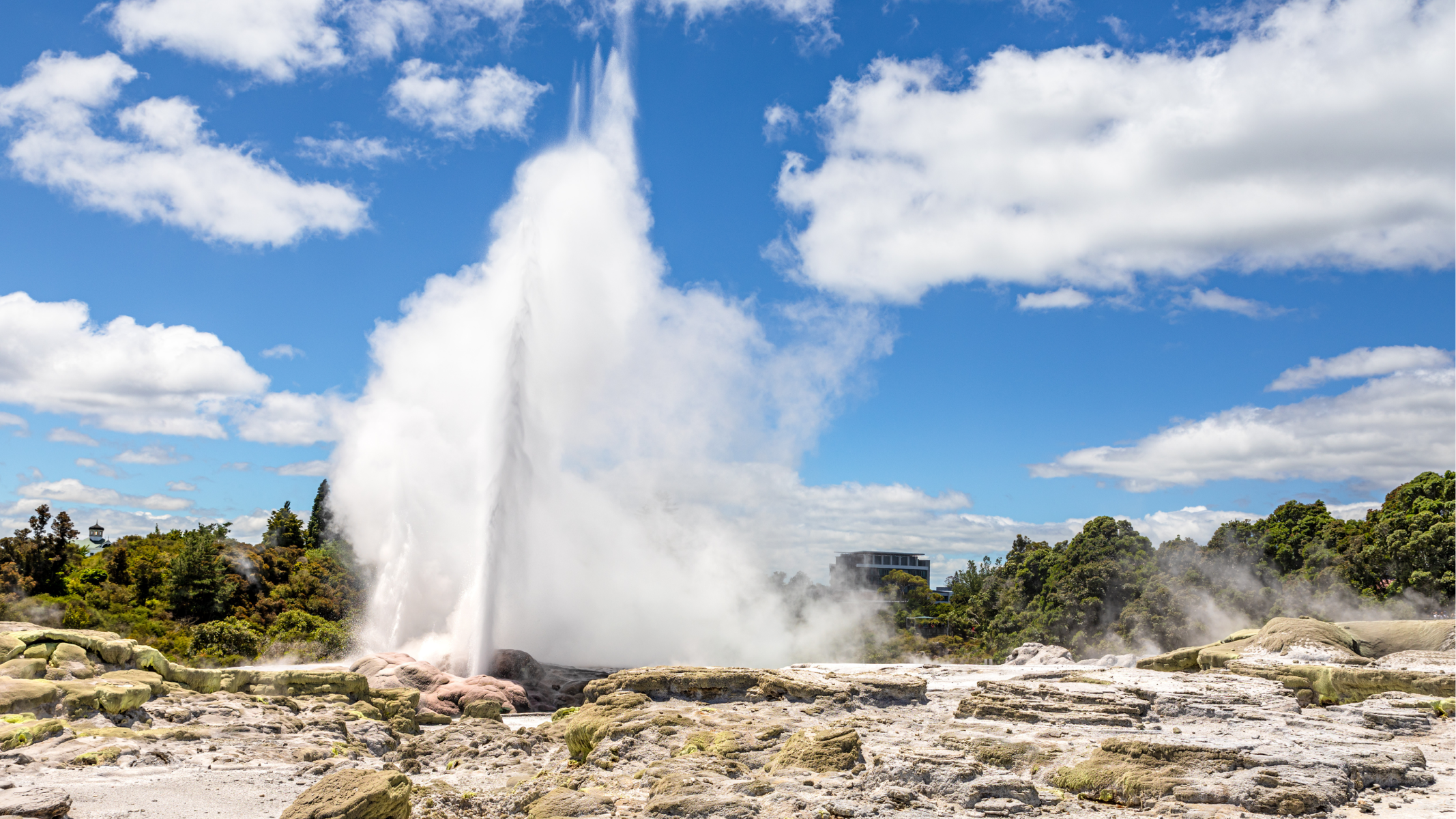
Geyser erupting in Rotorua, New Zealand
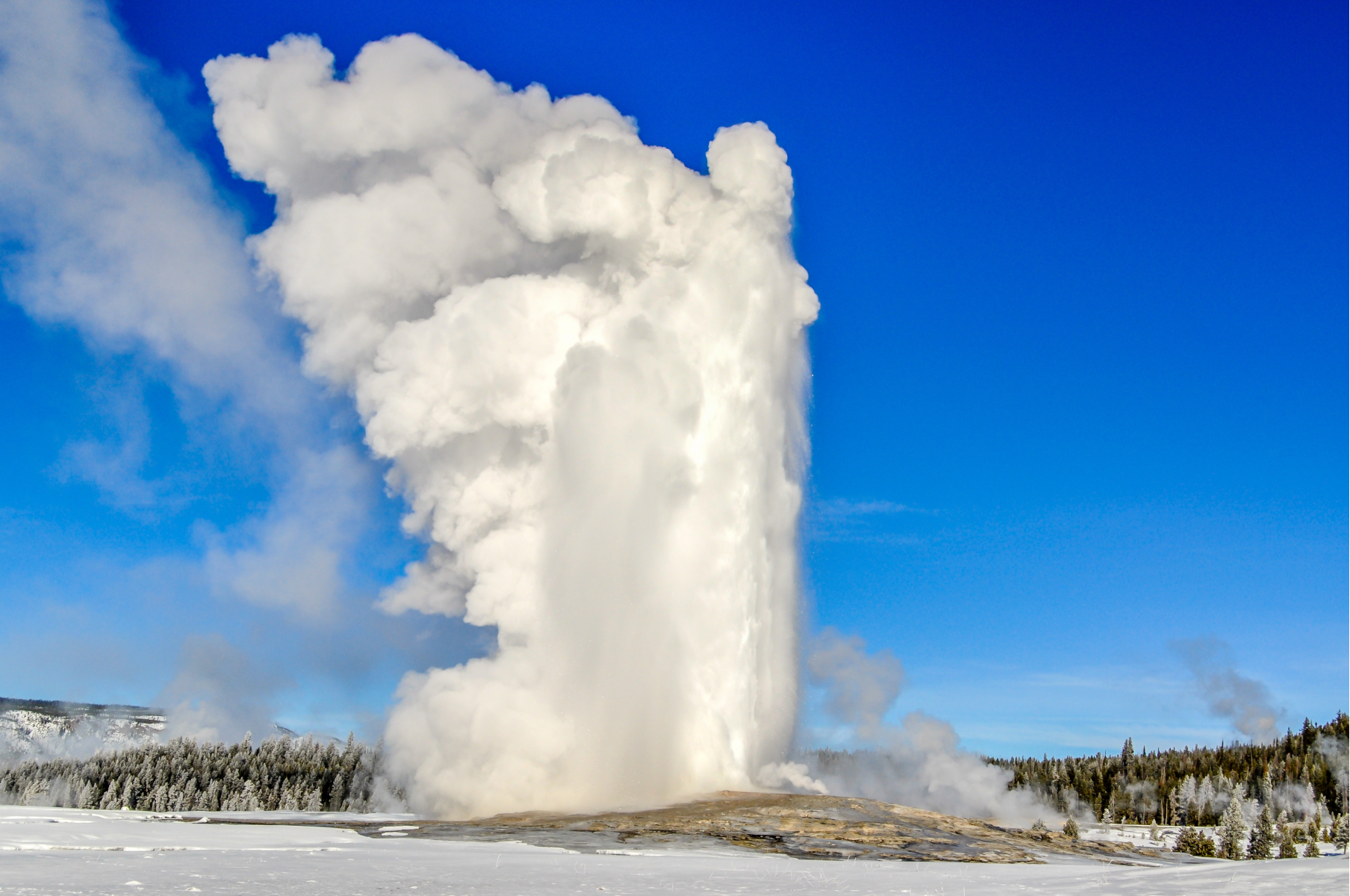
Old Faithful erupting in Yellowstone National Park
If you’re in the mood for the geysers and dramatic mountain landscapes of New Zealand, Yellowstone has you covered. One of 12 National Parks on the UNESCO list of World Heritage sites, Yellowstone contains a veritable variety pack of landscapes: the waterfalls and striated rock chasms of its Grand Canyon, the Lamar Valley’s rolling alpine meadows dotted with grazing bison, the lodgepole pine forests, the largest high-altitude lake on the continent, and, famously, the park’s geyser basin, where about half of the planet’s active geysers sputter, spray, and billow.
Indeed, when you can see 500 geysers in just one quadrant of the park’s 2.2-million acres, why would you go anywhere else? The geysers are just the most theatrical of the park’s 10,000 hydrothermal features—you can also visit colorful hot springs of water superheated by the magma under the relatively thin crust of the earth’s mantle here. At spots throughout the Geyser Basin, mud pots and paint pots boil and spurt, fumaroles hiss and steam. There’s even a river named the Boiling River.
3. For the Arid Beauty of the Sahara, Go to White Sands
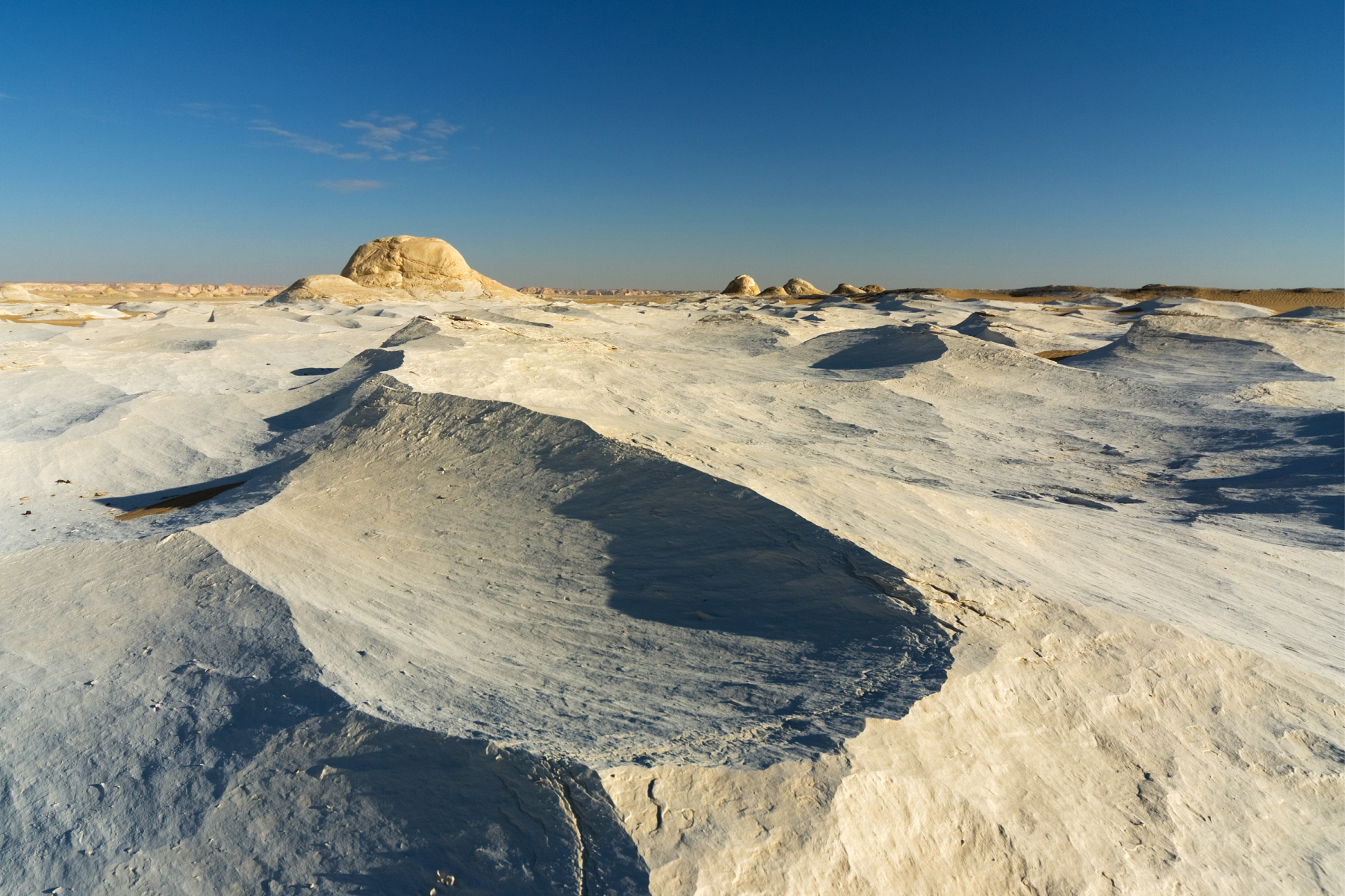
White sand in Egypt’s White Desert
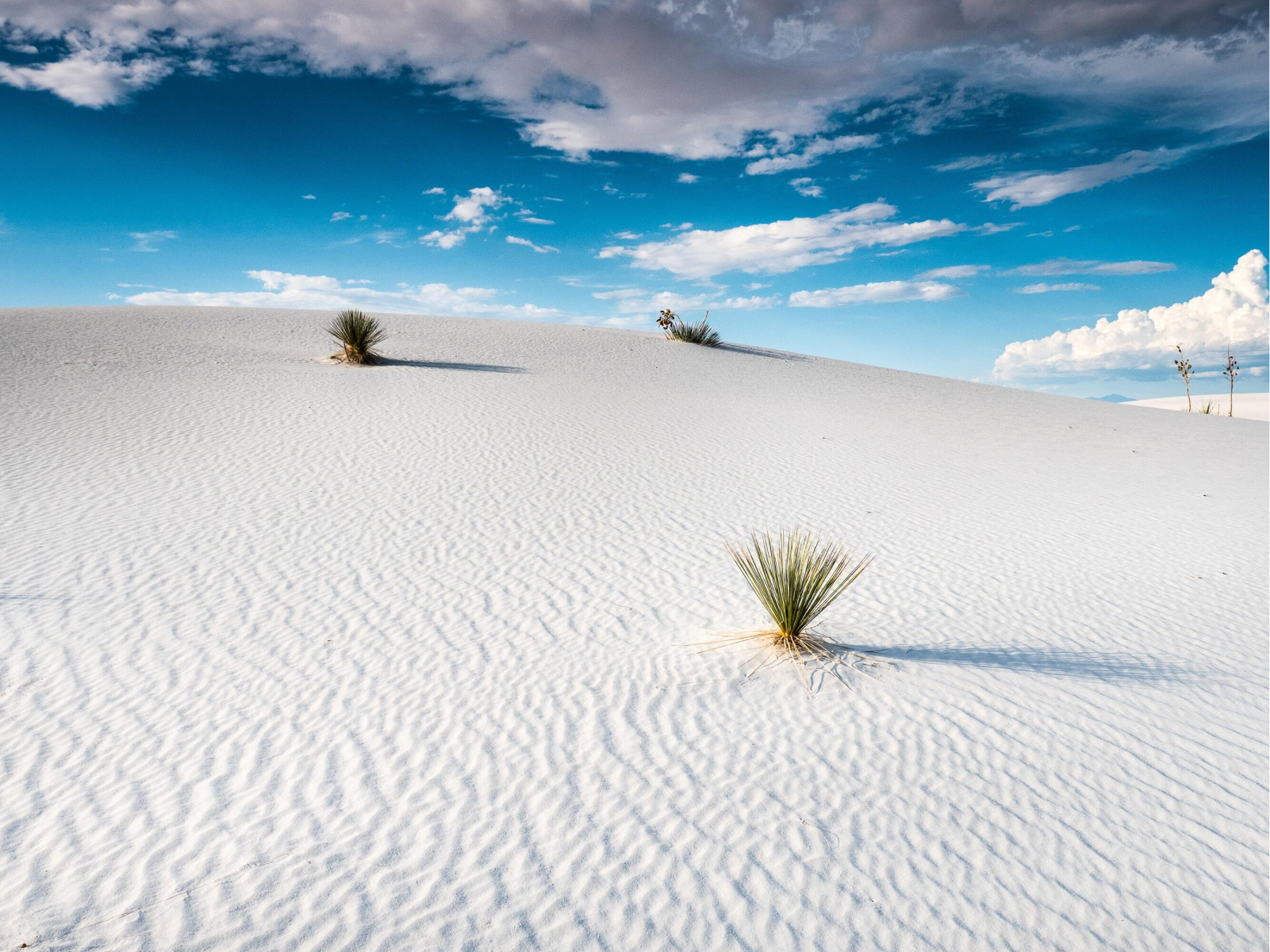
White sand at White Sand National Park
Egypt’s mind-blowing White Desert has its equal in New Mexico’s dazzling White Sands. America’s newest National Park—it was added to the register in late 2019—is home to a rare gypsum desert, an expanse of blindingly white dunes that’s a visual punch in the nose. Normally, the powdery mineral dissolves when wet, but in New Mexico’s arid climate, the great gypsum sand dunes have grown, with little erosion. Today, the 145,762-acre park is even visible from space.
The dunes swell and roll across a natural basin between the San Andres and the Sacramento Mountains in the southern reaches of the state. Only a few plants and animals have adapted to this unique landscape, making for pristine, unbroken white-washed vistas for miles. What little delineation exists consists of shadows of surface ripples, footprints of other visitors, and dune-top ridges. It is a truly spectacular place to hike, sled the dunes (rentals are available), star gaze, and take photographs.
4. Instead of Costa Rica, Try the Everglades

Caiman Crocodile in Costa Rica
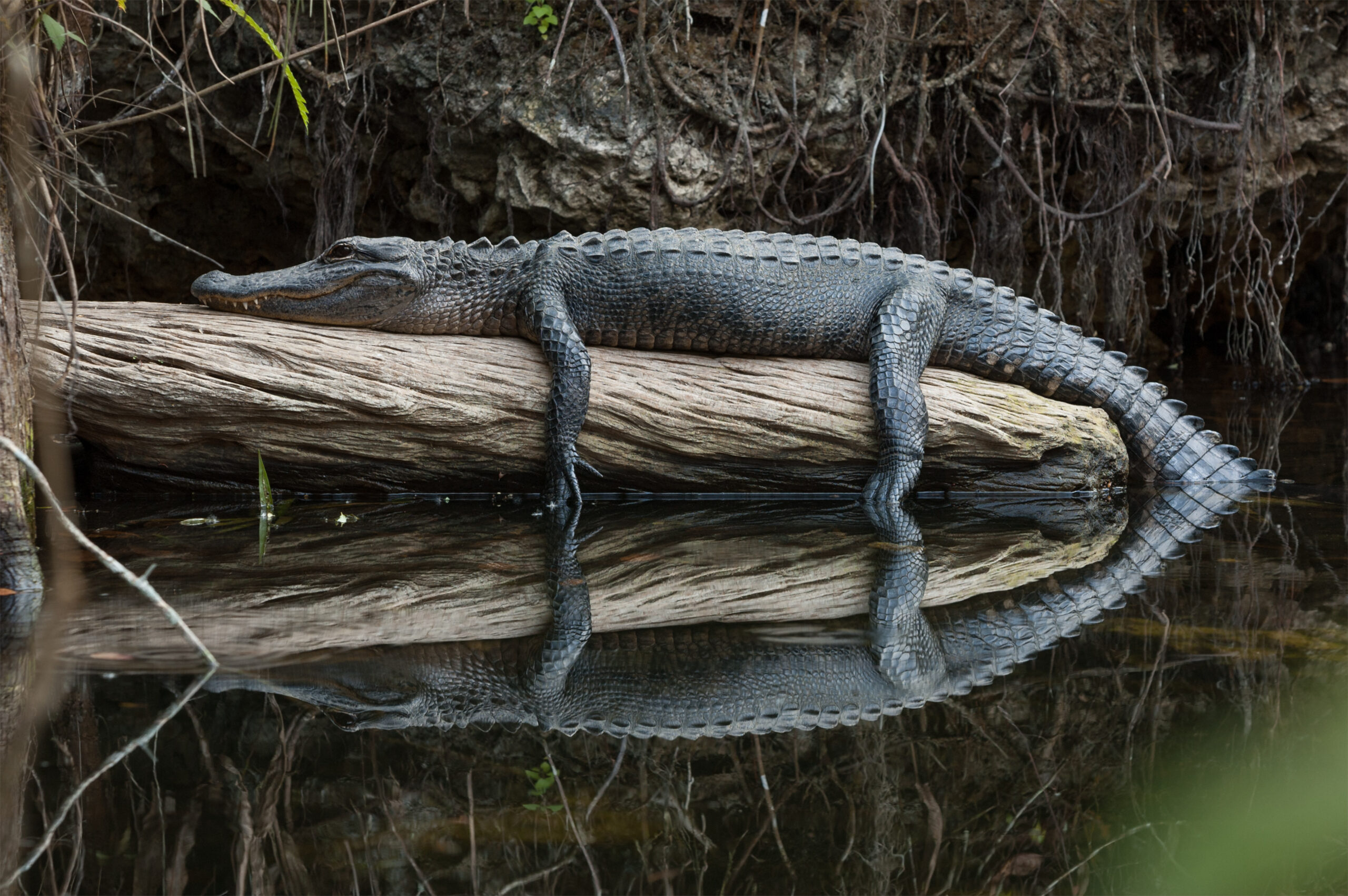
American Crocodile in Everglades National Park
Eager to explore Costa Rica’s lush subtropical foliage and surreal wildlife? Everglades National Park is closer and just as thrilling, yet many travelers make only a mere stopover en-route to Florida’s theme parks, beaches, and southern Keys. But nature lovers and those seeking watery adventure return to this 1.5-million-acre park—the largest subtropical wilderness in the United States—to explore the singular landscapes of its lush wetlands and view the astonishing wildlife here, much of it endangered.
During a single kayak trip, gliding across still, black water between mangrove trees, you may pass crocodiles, heron, manatees, turtles, and even panthers. You can walk paths and boardwalks that wind through the dense green stands of mahogany, live oak, and slash pine trees and over open wetlands blooming with lily pads. A few airboat companies offer rides into the furthest reaches of the park, where signs of human life fall away completely.
5. Trade Iceland’s Volcanic Landscape for Haleakalā
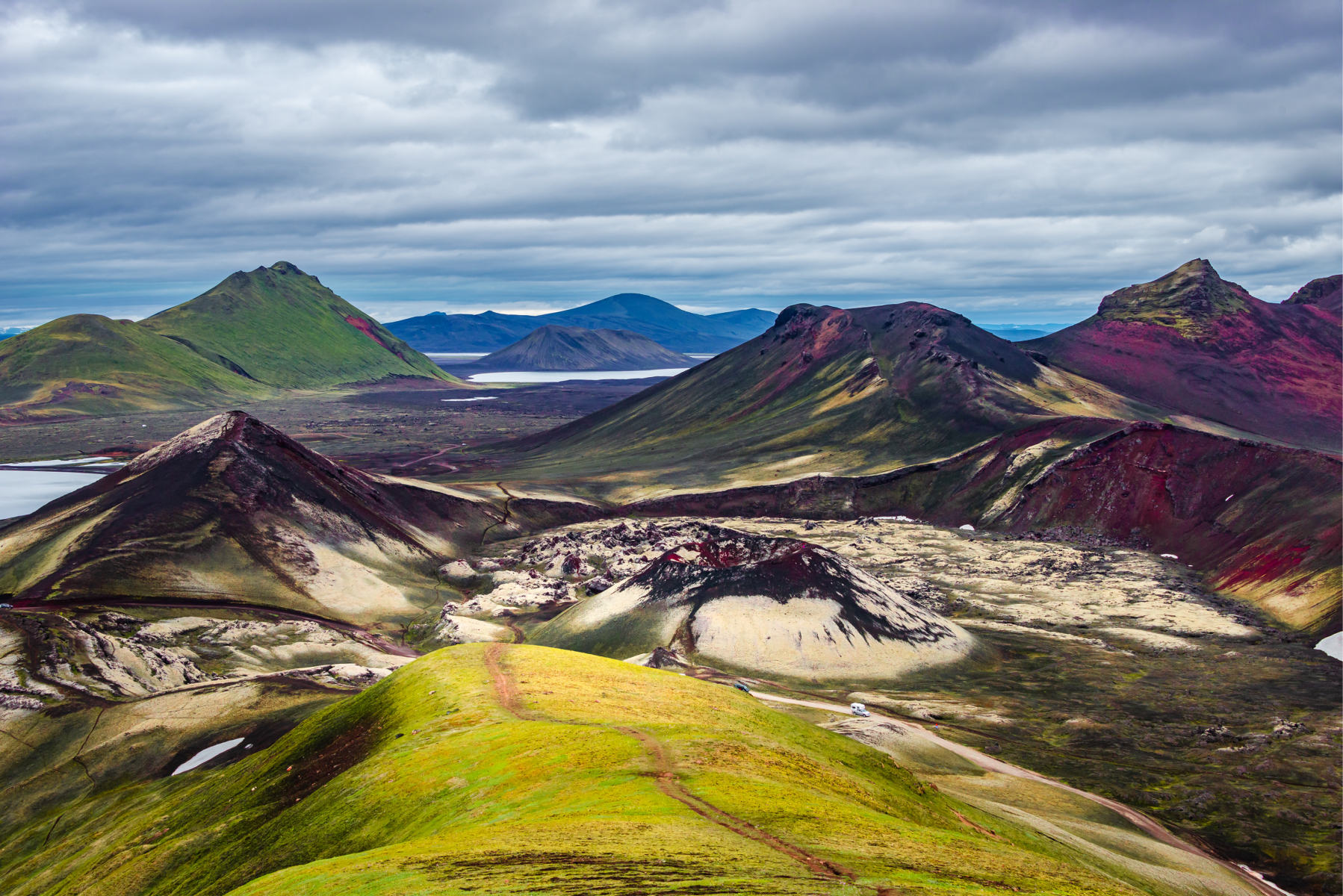
Panoramic view of Landmannalaugar lava field in Iceland
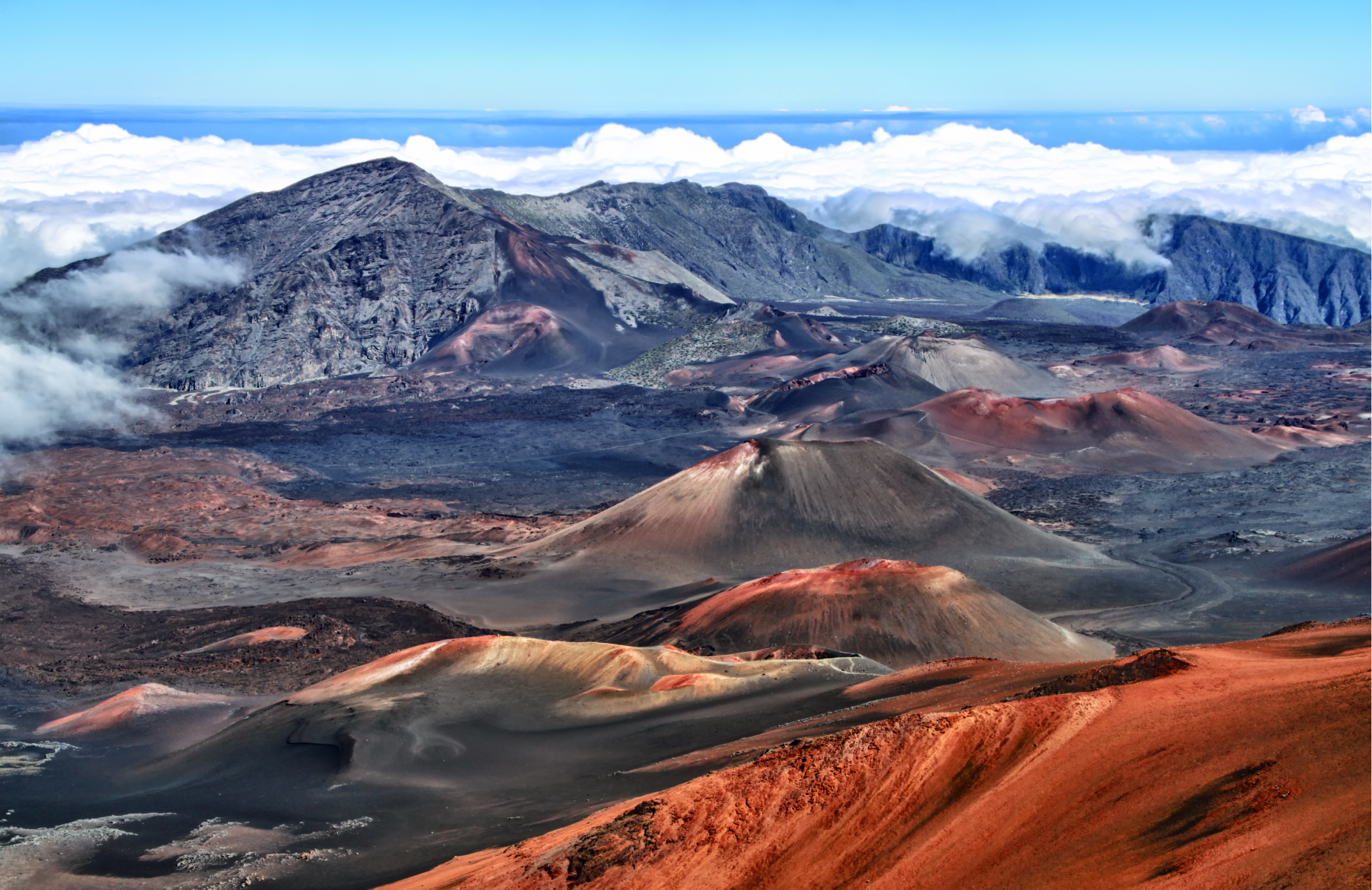
Panoramic view of Haleakala Volcano in Haleakala National Park
The fascinating juxtaposition of beauty, chaos, and spiritual energy of Iceland’s volcanic activity is as palpably felt in the other direction, amid the wonders of Haleakalā National Park on Maui. You may need to squint at first to see this one. How can visiting a park on a mostly tropical Pacific island have anything in common with a damp, cool island in the middle of the north Atlantic? But Hawaii and Iceland share a relationship that runs deep and hot: They’re both home to some pretty dynamic volcanic activity and near-lunar landscapes. Both regions are, at times, rocked by earthquakes, harbingers of activity under the crust of the earth.
Maui’s mesmerizing Haleakalā National Park is, like Iceland itself, a place of extremes. The short, vertical ascent to the Haleakalā volcano summit is like no other drive on earth. You’ll go from sea level to 10,023 feet in just 38 miles, from a lush, tropical setting to a barren, moonlike plateau with the crater at its center. Sunrise is a top draw—be sure to reserve ahead—but sunset is just as spiritual, and no reservations are required. In between, the park’s impressive 33,000 acres provide terrific hiking opportunities through astonishing landscapes. Even if you were dead set on going to Iceland, the splendid geological drama playing out around you in Hawai’i will surely make up for its lack of sheep and glaciers.

